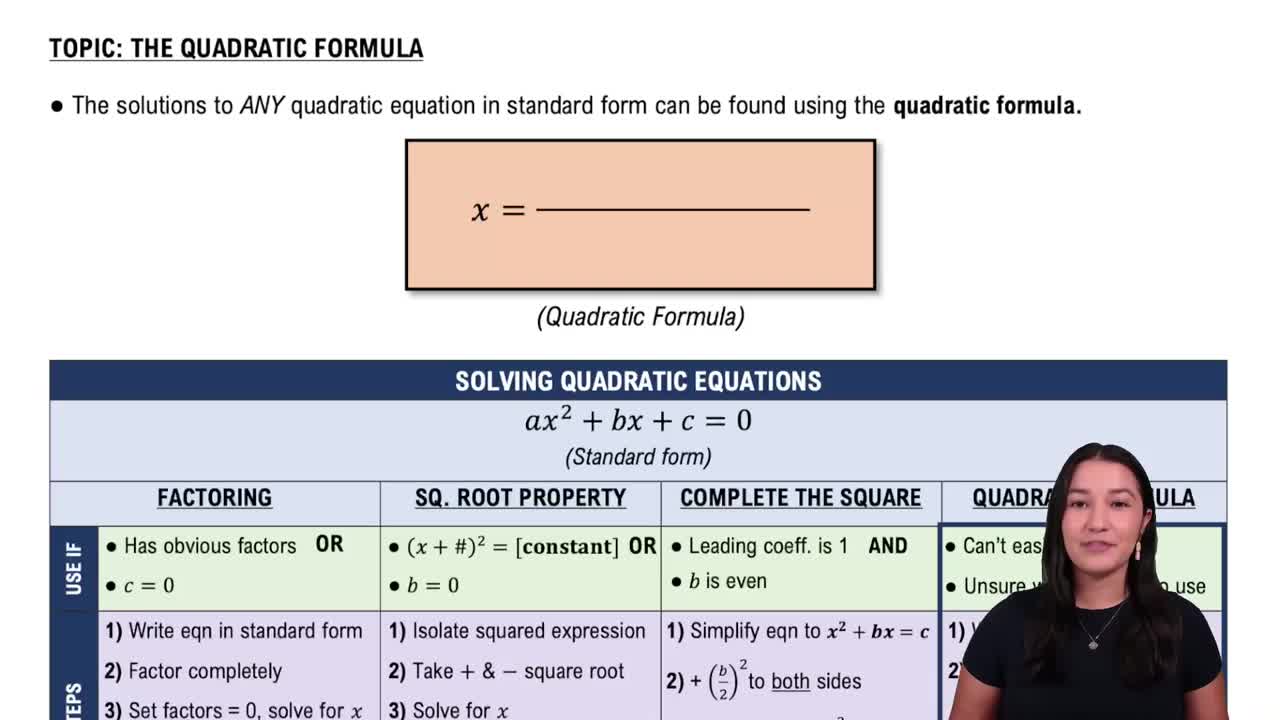Here are the essential concepts you must grasp in order to answer the question correctly.
Discriminant
The discriminant is a key component of a quadratic equation in the form ax^2 + bx + c = 0, represented by the formula D = b^2 - 4ac. It helps determine the nature of the roots of the equation. If D > 0, there are two distinct real solutions; if D = 0, there is exactly one real solution (a repeated root); and if D < 0, the solutions are nonreal complex numbers.
Recommended video:
Types of Solutions
The solutions of a quadratic equation can be classified based on the value of the discriminant. Real solutions occur when the discriminant is non-negative, while nonreal complex solutions arise when the discriminant is negative. Additionally, real solutions can be further categorized as rational or irrational, depending on whether they can be expressed as fractions of integers or not.
Recommended video:
Quadratic Formula
The quadratic formula, x = (-b ± √D) / (2a), provides a method for finding the roots of a quadratic equation. While the question specifies not to solve the equation, understanding this formula is essential for interpreting the discriminant's implications on the nature of the solutions. The formula shows how the discriminant directly influences whether the solutions are real or complex.
Recommended video:
Solving Quadratic Equations Using The Quadratic Formula
 Verified step by step guidance
Verified step by step guidance Verified Solution
Verified Solution



 5:35m
5:35m